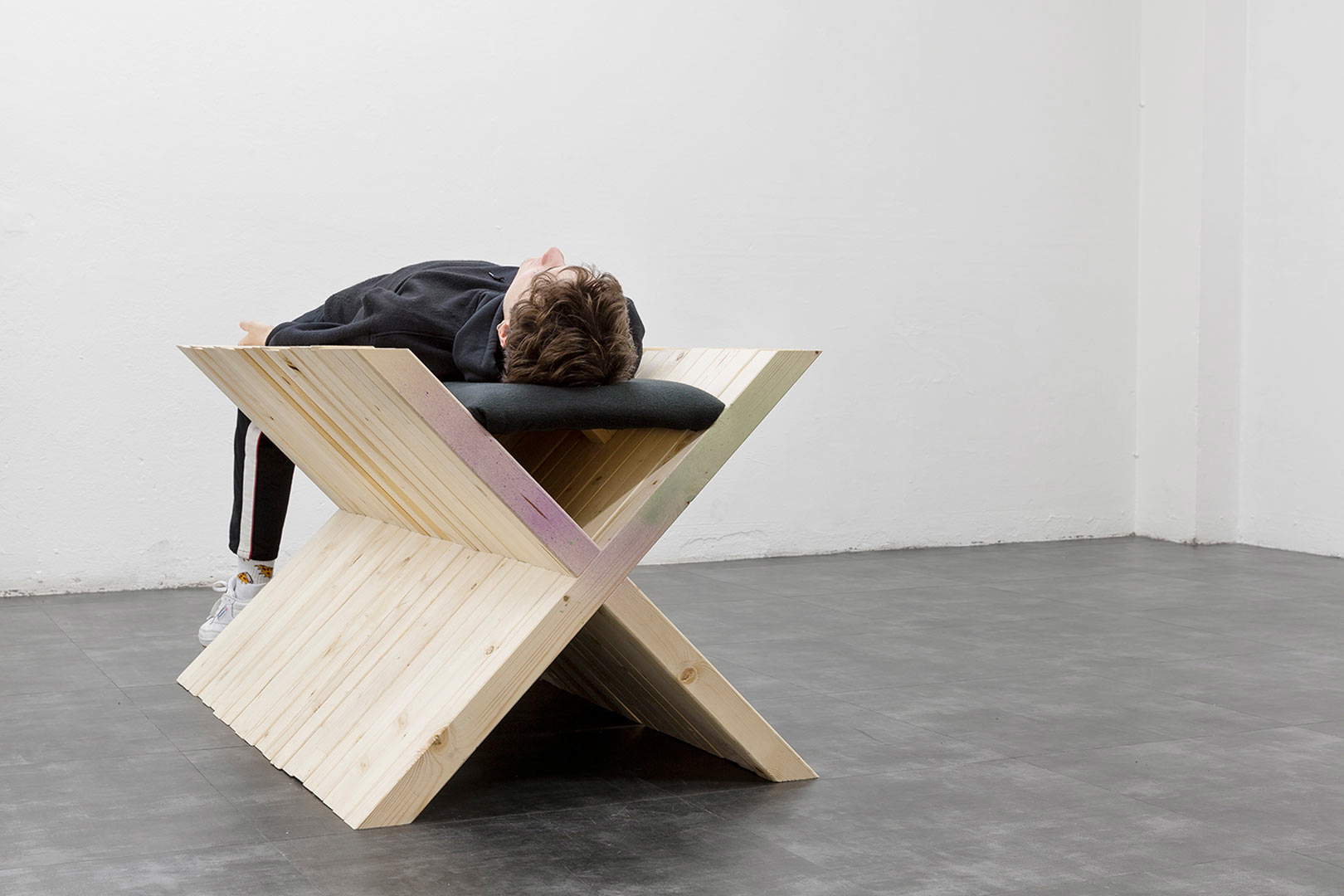Ilaria Bonacossa. I think it is still a bit premature to see the effects of the pandemic. Except for a few international artists whose studio is a real production factory, the lockdown has not affected so significantly in transforming their daily lives even if it has put their exhibitions and the possibility of encountering other people’s work on standby. Themes such as the difficulty of relating, fear of the other, and certain dystopian visions related to contemporary society and our obsessive relationship with technology have been the focus of reflection by Italian and international artists for several years. In my opinion, one of the most significant effects of the pandemic was that the art world recognized itself as part of a system that needed to feel united, to team up, abandoning useless competitive visions. This was demonstrated by the campaigns to sell works in support of hospitals in the first lock-down in spring 2020 or the projects of aggregation among galleries such as “Italics” which told, through contemporary art, the exceptional nature of our country.
We also realized that we need art. The lockdown has amply demonstrated this: museums are places that help to think, to form a society that is smarter, more aware, more open to diversity and transformation. They are a fundamental social tool. And contemporary art has always had a shot in the arm in interpreting the present and the future because of its vocation to imagine more or less dystopian worlds. What we are experiencing is so unexpected that surely art can be a good way to understand it.
 |
| Ivana Spinelli, Meditation place (2020; Wooden bedstead, spray color, foam rubber, fabric 73 x 66 x 123 cm). Courtesy of the artist and Gallleriapiù. Photo Stefano Maniero |
Ilaria Gianni. I agree with what Ilaria said, emphasizing the aspect related to the dimension of confrontation and sharing. The artists, without a doubt, felt the lack of relational space in its various articulations: from the relationship with the exhibition space to that with the public; from the daily conversations that take place in the studio, to the more institutional ones. Many have taken the situation out of the ordinary to focus on their own work, putting plans in place that have never been realized. Others, on the other hand, have felt the need to reflect on their positions not only formally and conceptually as interpreters of the imaginary, but as political agents in such a precarious social sphere.
In May, Art Workers Italia was founded, a research and action group that has been active in recent months to obtain recognition of professionalism and protection for contemporary art workers with the aim of rethinking collectively, the logics of the entire sector. In July, the Forum of Italian Contemporary Art, an informal organization established in Prato in 2015, met with the aim of responding to the pressure to which the Covid-19 pandemic has subjected contemporary visual arts, partly due to a lack of intervention from the political world. Artists, curators, critics, teachers, have put forth their knowledge, donated their time, and committed themselves personally, motivated by the hope of building a structured path that can leave a tangible trace in the present and for the future of the contemporary art system.
I also feel like saying that what has struck me throughout this pandemic is the direction taken by the works conceived and produced as a response to this historical moment. It has been a long time since I have witnessed such thoughtful and engaged, resolved and engaging works. Many artists seem to be opening avenues in the reading of our present, suggesting how art, by raising the tone of its voice, has decided to undertake a deviation from the representations we are given of contemporary society. Without deploying the brutal machista and violent force with which the media around us have accustomed us to live, artists have opposed a visual power imbued with critical translation, imagination, and generative force. I saw works that laid the foundations of a bridge that will lead to an implementation of a critical consciousness through research and exercises in interpretation: works centered on the questioning of positions, where the courage to create critical discourse emerges, to address issues understood as urgency (anti-racism, redefinitions of identity politics, the ecological crisis, the relationship with the digital, media terrorism, to name a few).
We find ourselves before a new generation of artists interested in repossessing the present, who have felt the urge to turn their backs on large urban centers (many have decided to move to rural areas and confront a more authentic, ancestral landscape) in an attempt to better analyze that elusive complexity of the contemporaneity we inhabit. The tension between Nature and the Present, and especially between Nature and the Future, that has highlighted this pandemic has led artists to reflect on their role, becoming more and more openly aware of how the elaboration of the imagination is one of the strongest strategies of resistance.
Warning: the translation into English of the original Italian article was created using automatic tools. We undertake to review all articles, but we do not guarantee the total absence of inaccuracies in the translation due to the program. You can find the original by clicking on the ITA button. If you find any mistake,please contact us.